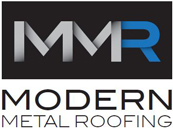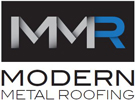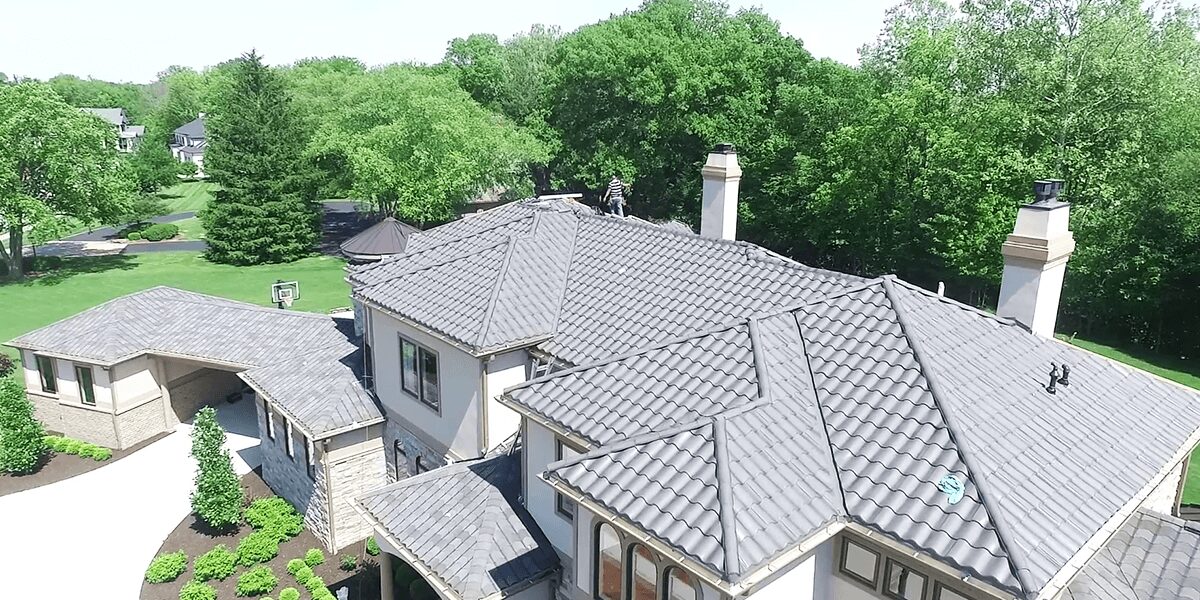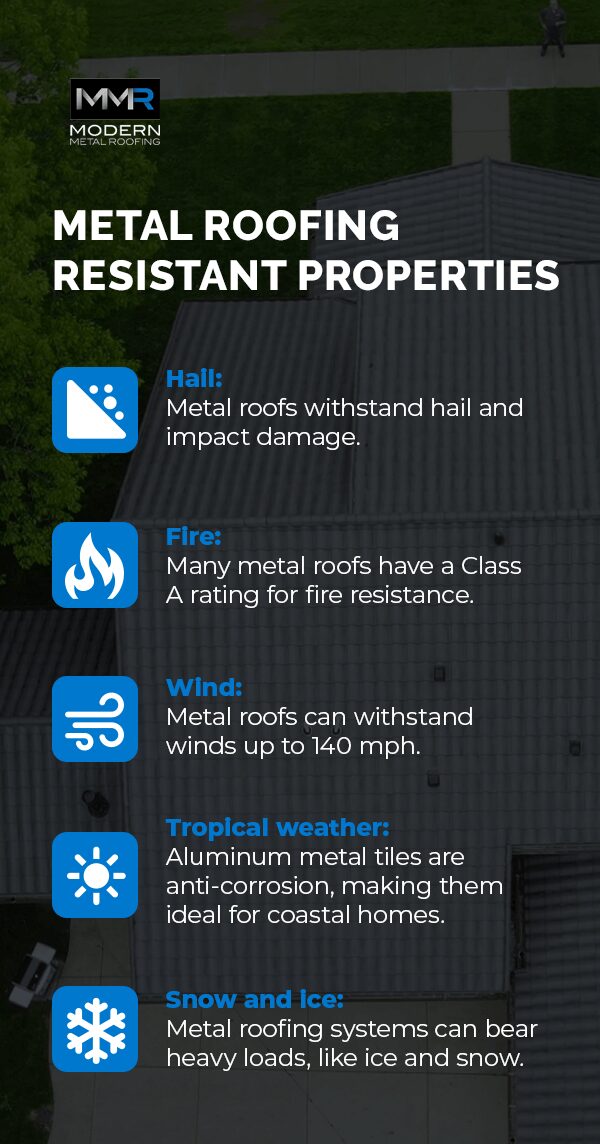- Durability Comparison
- Cost Comparison
- Aesthetic Appeal of Roofing Tiles
- Environmental Impact
- Advantages of Metal Roofing Over Clay Tiles
- Find Your Perfect Metal Roof Today
Are you looking for a new roof for your home or business? With so many options, choosing the right roofing tile can be overwhelming. Three materials stand out — metal, clay and concrete. Each material has unique characteristics that impact durability, aesthetics and energy efficiency. Metal roofing tiles balance longevity with striking good looks. Clay tiles offer timeless elegance, while concrete roofing offers design flexibility.
This guide provides a comprehensive comparison of each material. Explore durability, cost, aesthetics and sustainability to help you find the best fit.
Roofing Materials Comparison
Let’s look more closely at these three options to see how clay and concrete roofing tiles compare to metal roofs:
Metal Roofing Tiles
Metal roofs were once reserved for industrial or commercial buildings. Modern metal roofing has changed the game. Its durability, versatility and customization make metal a smart choice for homeowners.
- Types: Popular metal tile materials include steel, aluminum and copper. Steel is the most durable, while anti-corrosive aluminum is ideal for coastal environments. Copper is less popular because it can tarnish.
- Uses: Metal roofing is ideal for residential, commercial or industrial properties. Architects appreciate its versatility and aesthetic appeal for roofing design or accent details. Agricultural buildings like barns or sheds often feature metal roofs.
- Popularity: According to Freedonia Group’s 2024 Roofing Report, demand for new metal roofing is rising. Homeowners and builders want cost-effective, weather-resistant roofing that meets building codes.
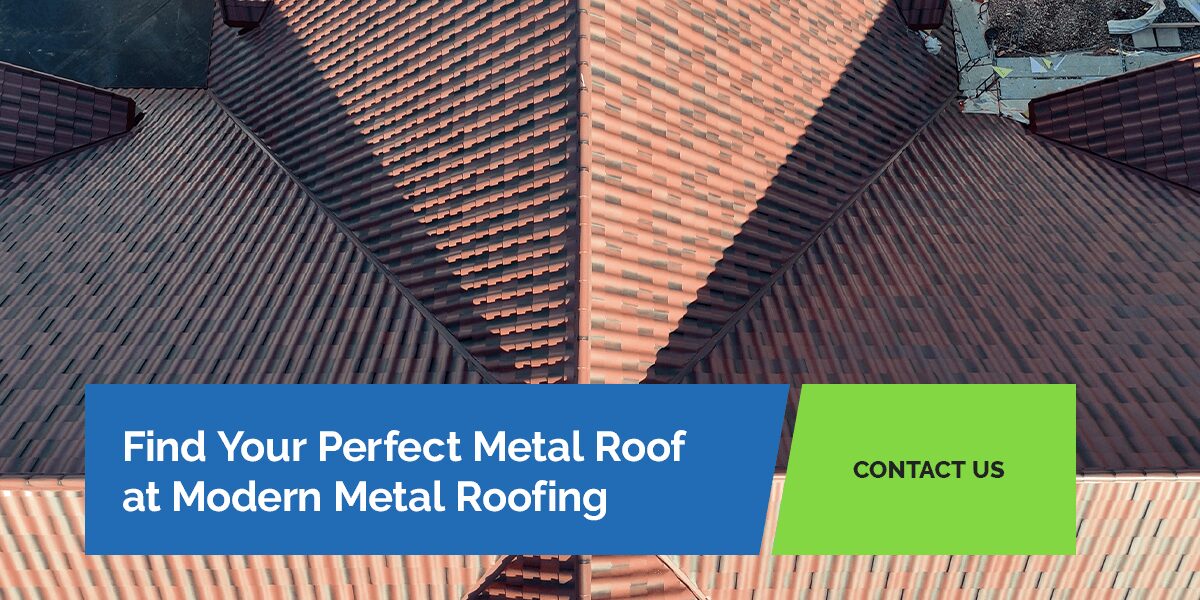
Clay Roofing Tiles
Clay tile roofing has a long history. It was once the most popular tile because of its aesthetic appeal.
- Characteristics: Clay tiles comprise natural materials like terracotta or clay. Once formed, they bake at a high temperature in an oven.
- History: Clay is one of the oldest building materials. The origin of clay roofing tiles dates back to around 10,000 B.C. in China and the Middle East a short time later. From there, it spread throughout Europe and Asia. The ancient Romans and Egyptians used these tiles to roof their buildings. Ceramic tiles arrived in America with European settlers in the 17th century.
- Grades: Clay tiles come in three grades with varying weather resistance levels. Grade 1 resists severe frost, grade 2 moderate frost and grade 3 minimal frost.
Concrete Roofing Tiles
Concrete tiles provide design versatility and longevity, making them a popular roofing choice.
- Composition: These tiles consist of cement, sand and water molded using high heat. They resemble clay or slate tiles. Small grooves on the surface help water to run off the tiles.
- Types: Concrete roofing tiles come in natural, synthetic or fiber options. Natural tiles are organic, while synthetic tiles enhance color and texture with chemicals. Fiber tiles include fiberglass for extra durability.
- Advantages: The benefits of concrete tiles include design versatility, durability and weather resistance.
1. Durability Comparison
Durability is a top priority when choosing roofing materials. A roof is a significant investment, and you want it to last. Let’s look at the factors that determine durability:
Life Span
The life span of roofing tiles starts when you install the roof and ends when you replace it. Each roofing material’s life expectancy depends on installation, maintenance and climate:
- Metal: A quality metal roof can last more than 50 years. Some manufacturers enhance metal roofing durability by using thicker steel. The life span differences between metal and clay roofing tiles depend on material, metal thickness and clay tile grade.
- Clay: The life span of clay vs. metal roofs is similar. Well-maintained clay roofing can last over 50 years, but the tile’s grade affects its longevity. A grade 2 or 3 tile may experience water absorption or frost, which can deteriorate the material.
- Concrete: This material offers the highest life expectancy of 60 to 75 years.
Weather Resistance
As extreme weather and natural disasters continue to batter the U.S., weather resistance is a key concern. Fire protection remains front of mind in the wake of devastating wildfires.
Metal roofing is one of the best roofing materials for extreme weather conditions. Here’s a breakdown of its resistant properties:
- Hail: Metal roofs withstand hail and impact damage. This roofing undergoes strict safety and certification testing by the Underwriters Laboratory (UL).
- Fire: Many metal roofs have a Class A rating for fire resistance. Wood or asphalt shingles can burn, so the Federal Alliance for Safe Homes (FLASH) suggests covering them with metal.
- Wind: Hurricanes and tornadoes can tear off traditional roofing systems, but metal roofs can withstand winds up to 140 mph.
- Tropical weather: Aluminum metal tiles are anti-corrosion, making them ideal for coastal homes. They also protect buildings from storms and heavy rainfall.
- Snow and ice: Lightweight metal roofing systems can bear heavy loads, like ice and snow. Their smooth surface prevents ice damming while encouraging snow to slide right off. You can also install snow guards for added protection.
Like metal, both clay and concrete roof tiles are Class A fire-resistant. These tiles can withstand golf ball-sized hailstones, but experts recommend an asphalt underlayment. They have a higher wind resistance than metal roofs. Clay and concrete are the only roofing tiles that exceed current seismic loading test requirements. Remember, clay tile’s weather resistance depends on its grade. Only grade 1 clay roof tiles can handle extreme winters and freeze-thaw effects.
Maintenance Requirements
A well-maintained roof stands the test of time, but some materials need more TLC than others. Metal requires far less maintenance than clay or concrete tiles. Besides an annual clean with soap and water to remove debris, your metal roof looks after itself.
Roof maintenance tips for clay or concrete shingles are more complex. Clay shingles may crack or break over time. Maintaining clay roofs includes regular inspections, cleaning, broken tile repairs and underlayment checks. Maintenance of concrete roofing tiles involves removing algae or moss. Debris can clog gutters, causing water damage. A roof flashing system prevents water leaks but also needs regular maintenance. You may need to repair or reseal damaged concrete tiles over time.
2. Cost Comparison of Roofing Materials
The cost-effectiveness of metal vs. clay and concrete roofs is about more than the price of the tiles. You must consider installation, energy efficiency and recurring costs like repairs or maintenance. Comparing these costs to the increase in property value gives you the return on investment (ROI).
Installation Costs
Your roof’s size, material type and labor influence installation costs. Metal roofing’s lightness and quicker installation times offer a budget-savvy option. Clay tiles are the most expensive of the three materials. In addition to the cost of the tiles, you may pay extra for labor and an engineer to check your building’s ability to handle their weight. Concrete tiles fall in the middle. They cost less than clay but may also need extra structural support.
Long-Term Costs
Consider the long-term expenses like maintenance, repairs and energy efficiency. These costs help you decide which roofing option provides the best value over time:
- Energy efficiency: Each material offers benefits that can lower your energy bills. Metal tiles reflect heat for better cooling, while clay insulates to reduce energy use. Concrete is less energy-efficient than clay.
- Maintenance: Metal roofing saves on maintenance since it requires little care. Maintaining clay or concrete tiles through inspections, cleaning and resealing can be costly.
- Repairs: Clay and concrete tiles are more likely to crack or break than metal tiles. Over the life span of these roofs, you may need to replace or repair shingles often. Metal’s durability translates to fewer repairs, saving you money in the long term.
Return on Investment
A new roof increases your property’s value, offering an ROI that offsets the initial cost. Metal roofing leads the pack due to its longevity and low maintenance costs. Homeowners and business owners can enjoy savings on repairs and energy bills, making it a smart choice for the long term. Clay tiles are pricier upfront but provide energy efficiency that can pay off over time. Concrete tiles strike a balance. While durable and energy-efficient, they may need more maintenance and repairs. Metal roofing generally provides the best ROI, followed by clay and concrete.
3. Aesthetic Appeal of Roofing Tiles
As a style-savvy home or business owner, you want your roof to look as good as it performs. Metal, clay and concrete tiles each offer aesthetic advantages:
Metal’s Chameleon Appeal
A metal roof doesn’t have to look like metal. Modern metal roofing can mimic the style of traditional clay, concrete or wood shake. You can enjoy the benefits of metal with the aesthetic appeal of other materials.
Metal tiles come in various colors and finishes to suit any style. To change the look, you can choose between powder and stone coatings. These coatings add a protective layer to the metal. Powder coating has a smoother, more uniform appearance combined with damage-resistant powder. A stone coating uses ceramic-covered stone chips for color, texture and protection.
Clay’s Traditional Charm
The history of clay roofing adds a sense of classic, timeless appeal. Far from the traditional terracotta, today’s clay tiles come in many colors, styles and textures. You can often find distinctive red, barrel-shaped clay tiles on roofs throughout Spain. These tiles suit Mediterranean-style homes.
Concrete’s Versatile Design
Concrete tiles’ appeal lies in their versatility. Manufacturers can mold into different shapes, including imitating clay shingles or other styles. This roofing material allows building owners to choose between traditional and modern designs. You can paint concrete tiles any color, but they may fade, requiring maintenance to keep them bright.
Impact on Home Value and Curb Appeal
All three roofing options can enhance curb appeal and increase property value. Potential buyers appreciate metal’s sleek, modern appearance and its ability to mimic other styles. Clay provides a classic look that many buyers find appealing, but designs are more limited than those of other tiles. Concrete’s cost-effectiveness and versatility may sway homeowners. The roof’s energy efficiency, durability and maintenance needs impact your home’s resale value.
4. Environmental Impact
More building owners are searching for eco-friendly roofing options. Sustainable roofing combines recycled or renewable materials with energy efficiency and waste reduction.
Sustainable Building Materials
Here’s how each roofing material does their part for the planet:
- Metal: Because metal is 100% recyclable, it doesn’t have to end up in landfills at the end of its life. Metal roofing tiles contain at least 25% recycled material. You can install metal tiles over existing asphalt roofing, avoiding the hassle of disposing of old shingles. As a final bonus, metal’s long life span means fewer replacements!
- Clay: Clay tile materials’ natural composition and eco-conscious sourcing make them sustainable. Their longevity also reduces replacement costs. However, clay roofing can be fragile, and you may need to replace broken tiles frequently.
- Concrete: Like clay, concrete tiles feature all-natural ingredients like sand, cement and water. Programs allow you to recycle concrete roof tiles at the end of their life.
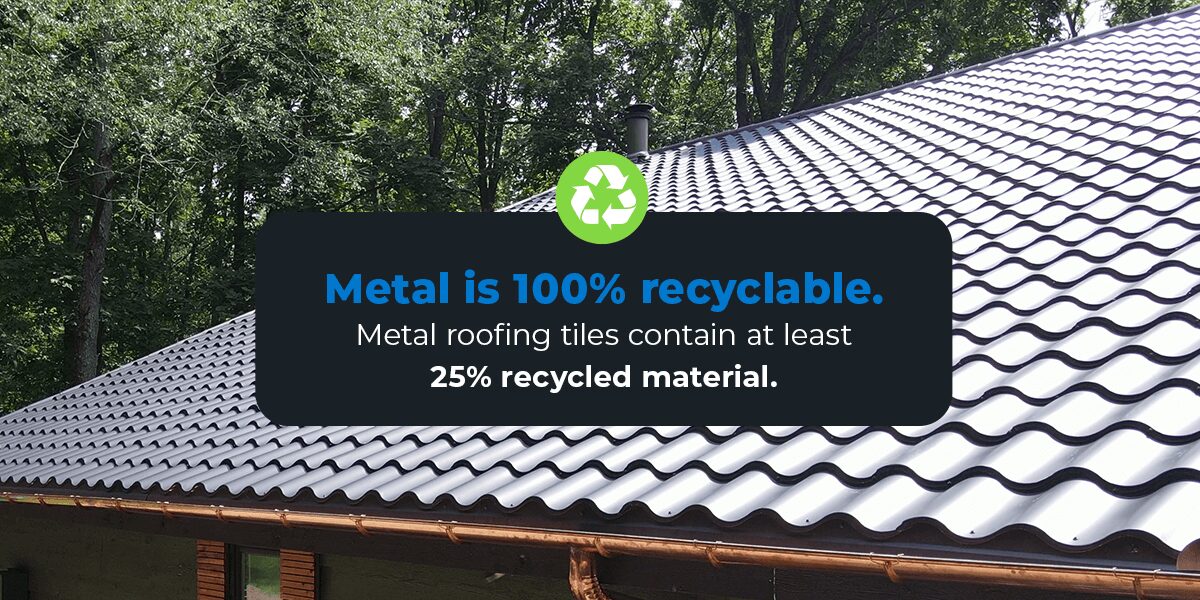
Energy-Efficient Roofing Solutions
Measuring a roof’s energy efficiency depends on the following characteristics:
- Solar reflective index (SRI): This rating measures a material’s ability to reflect solar energy back into the atmosphere. The higher the SRI, the less heat the roof allows into the building.
- Thermal emittance: Your roof absorbs heat. Thermal emittance refers to directing absorbed heat away from the building. High-emissivity roofing tiles cool down quicker than low-emissivity materials.
- Reflectivity: Roofs must reflect sunlight and heat to cool buildings’ interiors. Less reflective materials absorb heat.
Metal roofing’s energy efficiency can save up to 40% in energy costs by directing solar radiation away from the property. Choose metal tiles with high reflective and emissive properties for less energy consumption. A cool roof uses innovative pigments to enhance solar reflection and can lower utility bills while maintaining a comfortable interior temperature.
Both clay and concrete tiles offer excellent energy efficiency. Clay has the edge with superior thermal insulation, keeping buildings cooler in hot climates and reducing cooling costs. Concrete tiles provide good thermal mass. They absorb heat during the day and release it at night to regulate indoor temperatures.
What Are the Advantages of Metal Roofing Over Clay Tiles?
Metal roofing has the edge in the competition between metal vs. clay roofing tiles. The main benefits of metal roofing tiles are their durability and cost-effectiveness. Home improvement with metal roofs is easier than with clay tiles. Metal costs less to buy and install than clay roofing. Their weather resistance, energy efficiency and low maintenance lead to long-term savings. They are often made from recycled materials and can be recycled again at the end of their life as a roof.
Find Your Perfect Metal Roof at Modern Metal Roofing
Are you ready for roofing as durable as it is beautiful? Modern Metal Roofing (MMR) offers a range of American-made metal roofing styles that can mimic clay or concrete roofing. All our products are Florida-approved for weather resistance. We use thick 24-gauge steel on our roofs, so you know they can handle whatever Mother Nature has in store. We offer numerous colors and finishes so you can customize your metal roof to suit your taste.
Discover a rugged, energy-efficient alternative to traditional roofing. Contact us online today to learn more about our premium metal roofing.
